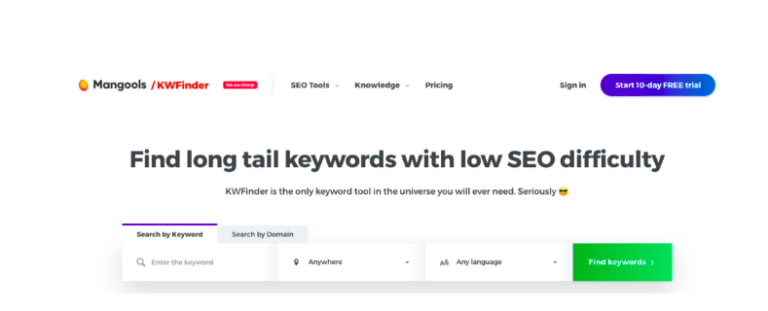Want to Learn How To Build a Niche Website?
You’re probably wondering what is a niche website?
It is always great to find the help that you need especially when you need it the most.
In this blog, we’ll show you our method of building a niche site.
This post may contain affiliate links which means we may receive a commission from purchases made through links. We only recommend products we rank as well rated and we can personally used: Learn more on our Private Policy page
We’ll show you what we did in the start that really got the ball rolling for us: starting a niche website.
We’ll teach you:
What a niche website is (and why it has the potential to make you money)
How to build a niche website from scratch
Our tips and tricks for writing content, monetizing your site, and more
The tools and resources we use and love
And much more…
Ready?
Let’s get this ball rolling.

So, you are trying to start your blog but you don’t know what niche to choose.
You’re probably wondering what a niche website looks like and what I need.
Glad you asked.
Put simply, a niche website is a website that focuses on a small segment within a large market.
It caters to people with more common, specific interests.
Was that clear?
It is like having a special interest groups.
Let’s look at an example.

Source: Catfoodadvisor.com
As you can tell, Cat Food Advisor is a niche website all about helping people pick the right type of nutrition for cats.
Sure, this site can be classified as a site on pets.
But it’s niched down to cats…and further niched down to cat food.
So yes, it’s an excellent example of a niche site.
Let’s look at how other experts define the term “Niche Site.”
Here’s the Google definition:
“A niche website is an online resource that focuses on a particular interest, topic or theme that is common to a narrow group people in a larger market.”
In short, a niche website is any website that focuses on a smaller, more specific part of a larger market.

Why Should You Build a Niche Website?
You may be thinking,
Why build a niche website for myself?
Why not target the larger market, which has a bigger audience and more potential to make big money?”
All great questions.
Here are two reasons to build a niche website.
You Won’t Be Going Head-On with the heavy hitters
Let’s face it.
It’s no longer 2010.
Which means, you can no longer choose any topic you want, build a blog around it, and expect to earn a ton of money through ads and affiliate partners.
For instance, let’s say you’re a pet expert.
Do you go ahead and build a site targeting all types of pet owners?
Well, you can.
BUT!
You’ll have tough competition all the way.
Let’s look at a case in point:
The Spruce Pets

Who are the giants in this space
They have a domain rating of 80 and 8.3 million site visitors per month.
So instead of going head-on with huge brands like this, you can go for smaller niches like “From The Field Pet”

You Can Be Unique
Sure, almost anyone can write about travel etc.
All you need to do is research, make a list, and publish your findings.
But writing about being a broke traveler is based on experience.
That’s unique.
And it works.
Just check out broketravelers.com where their tips, tricks, and secrets on how to travel broke around the world.

Interesting, huh?
It’s a unique, personal, intriguing spin on the regular travel stuff.
That’s the magic of a niche website
Question should we never go for broader, authority websites?
If you are asking, then great question.
The truth is, it depends on your preference.
And you can stay small and continue running your niche website forever.
That’s still cool.
But once you start getting a boat load of traffic..
You can think about broadening your scope and becoming an authority site.
All we are saying is that if you’re just starting out…
Building a niche website is the best way to go.
It will help you to stand out in the digital world.
But from there, your journey depends on you.
You can soar to new heights!
How to Build a Niche Website: 4 Steps to Success
Now that you know what a niche website is and why starting one is a great idea,,
Let’s get into the actual step-by-step process of building one.
Hold on because this is going to be fun..

How to Build a Niche Website Step #1: (Select Your Niche)
I know, it sounds simplistic.
Also, it sounds easy.
You sit down for 15 minutes, ask yourself.
What you’d like to blog about, and like magic.
You have your niche idea.
Sadly, it doesn’t work that way.
Because although you may be passionate about something (bee keeping)
You probably won’t find a ton of people who’d be interested in that.
The point is..,
Picking your niche means striking a balance between your passion and what’s profitable.
Let’s start with your passion.
Avoid Starting a Blog on a Topic You Hate
Despise accounting & finance?
Have trouble with marketing?
Bored when talking about business?
Then this is a no-brainer.
Don’t start a blog on those topics.
Why?,
Because building a niche website isn’t a get-rich-quick venture.
You’ll have to put in days, weeks, months, or even years of work.
We promise..
You’ll have more than a few sleepless nights.
You’ll reach a point where you’re tired and want to give up.
And if you hate what you’re writing about?
That’s right.
Chances are, you won’t even make it to your second month.
This is why we strongly recommend don’t go for a topic you hate.
No matter how much money there is in that niche.

Make Sure There’s Money in Your Niche
This is important..
As you don’t want to waste your time.
So, before you choose your niche, spend some time doing your research.
Get the scoop and spy on the market.
Know your clients and your competitors.
See how your competitors are faring?
Do they look successful, or they operating on a tin margin?
Find out how are they monetizing their websites?
Affiliate marketing, onsite ads, tutorials etc.
We know, this can get a tad confusing.
So let’s break the niche research phase down into a couple of easy steps.
Step #1: Spy on your competitors.
If no one tells you…
The truth is, Affiliate Marketing is all about being a copycat.
But you don’t need to plagiarizing other people’s work.
Nevertheless, you can try and follow in other bloggers’ footsteps.
See, how they write and how they incorporate their links etc.
You can even write on the same subject but add your twist and flavor to it.
This means spending time spying on your competitors.
Or more accurately, finding out if you have competitors at all.
An effective way you can do this is through using an SEO tools like Ahrefs.
Let’s imagine that you’re planning to start a website on dogs.
First, think of a keyword you’d like your site to rank for.
Let’s say that’s “dog food.” or”dog toys”
Type this keyword into Ahref’s Keyword Explorer.
Then, scroll to see which sites are ranking for these keywords.
Remember to…
Ignore the big sites like Petco and Amazon.
Always look for a site that’s similar to the one you’re thinking of starting.
Size matter.
Step #2: Find out if your site has a fighting chance
With huge authoritative sites,,
There’s not much point in going up against them for a niche opportunity.
So before you start,,,
First check if there are any smaller sites ranking on Google Page #1 for your dream keywords.
As a general rule,
A small site should be a site with a DR (domain rating) less than 30.
So, do we have one for your keyword search?
Like this example: keyword search “Turtle Food”
We find,,,
TurtleHolics that ranks on page #1 of Google and it has a DR score of 17.


Step #3: Check if there are a lot of keywords
Is there a lot of keywords to you write around and rank for?
Let’s say.
Your chosen niche is “Dog Hammock.”
Odd choice but let’s go with it.
You did a competition search for good measure..
And things are looking pretty good.
So you build your site and start writing about dog hammocks every week.
But a few weeks later, you’ve run out of topics.
Not a good place to be…
Like how many articles can anyone write on dog hammocks?
We say 10 tops.
If this is happening, you’ve probably niched down to a level too far…
…or you’re simply in a bad niche.
So do a quick sanity check..
Can you write at least 100 Articles on your topic.
Now, let’s go back to turtles.
Jump on Ahrefs’ Site Explorer and type in your competitor’s site.
In this case, it’s TurtleHolic.
Then, click “Organic Keywords”

As you can see, TurtleHolic ranks for 21,479 keywords.
Pretty good.
These keywords look really attractive.
For example, “why are turtles slow”
This has a search volume of 1,200 and a keyword difficulty score of 0.
What does all this data tells you?
Do you wan to build a turtle site because:
You’ll have a boat load of topics to write about.
The keywords your competitor is ranking for make it easy for you to get started.
So, you can now build your blog page on Turtle.
Let’s not jump the guns yet.
Because there’s one more critical thing to look at.
Step #4: Research if there are any products you can recommend
Having a successful, high-traffic site isn’t the same as earning money.
We are assuming that you’re not starting your site just for kicks.
You might want a good side income or a full-time income.
Whatever way you need to do more research..
Find out if there are any products you can recommend on your site (Affiliate Products).
It always a good idea to,,,,
Check on your competitors and see how they’re making money.
Let’s look at TurtleHolic…
They recommend products like these which are associated with Amazon
If TurtleHolic can recommends products from Amazon..
Then you can too.
Try hopping on Amazon and search for products you can recommend.
Like Start with “Turtle Food.”
You will see over 260 items popping up…

Fyi, you can also sign up for other affiliate networks.
Like ShareASale, CJ Affiliate or Clickbank.
Check these platforms to see if..
There are any affiliate programs you could join to complement your niche.
Step #5: Ask yourself:
Do I see myself doing blogging and promoting affiliate links,,
For at least four-six months?
Will you love your site enough to stick with it through the ups and downs?
No one can answer this for you.
It will be up to you to endure the painful early days.
And don’t think that you can do it without committing some capital.
You might ask..
What if I can’t afford an SEO tool like Ahrefs?
Smart question.
Especially if you’re just starting out, right?
Maybe $99/month doesn’t fit in your budget.
But!!
There are always alternatives.
For example, there’s KWFinder.


This alternative tool gives you all the data you need on keyword difficulty score, search volume, domain rating etc.
On top of that..
It won’t cost you a bundle to subscribe.
Quite affordable pricing for beginners.
How to Build a Niche Website Step #2: (Set Your Site Up in 4 Simple Steps)
Great Job.
You’ve passed the hardest part of building a niche website..
which is choosing your niche.
What is the next step?
The next part is way easier than researching and selecting your niche.
It consists of four simple steps:
Choosing your domain name
Getting a hosting plan
Selecting your CMS (Content Management System)
Picking your plugins and display themes
Let’s look at them one by one.
Choose and Buy Your Domain Name
Choosing your domain name is like naming a new business.
Which can be big a deal.
Especially when it comes to branding.
We think you should spend some time on it.
Also, pay attention to these general rules..
For choosing a domain name:
Keep it short and simple.
Include your niche in it.
Make it memorable.
Make sure it’s easy to read and spell.
Let’s check out some examples.
Here’s our domain name:

Short and simple?
Niche included?
Memorable?
Easy to read and spell?
Here is a low scoring example:
![]()
This is for a North Carolina community
Short and simple?
Niche included?
Memorable?
Easy to read and spell ?
You get the idea from these examples.
So, once you’ve come up with a domain name..
Do a quick search and see if it is available.
You can use Namecheap
Or you can search from your hosting company platform like Bluehost or Hostinger.
Note to the wise
Always pick .Com or .Org over .Net, .Ai, or other options.

Get a Hosting Plan
The very basic.
A hosting provider is what makes your website accessible on the internet.
So you’ll need one to get going.
Which web hosting provider should you choose?
It depends.
For some people, BlueHost works perfectly fine.
Plus, it’s much cheaper than other options like WPEngine and Godaddy.
You can check out BlueHost’s affordable pricing and plans:

You can get a hosting plan for as little as $3.96 a month.
This plan offers a free domain, so you can do your name search.
It must be noted that..
Experts don’t recommend you getting a domain name and hosting plan from the same provider.
Nevertheless, if you’re on a tight budget..
You can totally go ahead with Bluehost or Hostinger.
Get a Content Management System
A content management system makes posting content online super easy.
Yes super easy
Nobody, wants to go through all the trouble of coding, right?
Those days are over.
So, what is the best content management system (CMS) around?

You guessed it!
It’s WordPress.

Needless to say, it’s not the only CMS out there.
There are other options like Wix and Drupal.
But most people will say WordPress is the best option…
Because:
It’s SEO-friendly.
It’s reliable, with great support.
It’s used by 43% of the web (which is about half of the market)
Plus, it has great themes options and loads of plugins.
.
Select Your Themes and Plugins
This is the fun part!
Themes and plugins help you create a site that’s 100% your own.
Think of a theme like a template that you can use to decide what your site looks like.
With WordPress, there are tons of themes to choose from.
Yes..
You have the freedom to be as creative as you like.
We use the Astra theme which has a free version.
Then, there are plugins.
You can think of a plugin as something that gives your site special function.
For instance, there’s RankMath

Rankmath is a plugin that makes SEO easy.
It helps you optimize your content so it’s more attractive and rank higher by Google.
How to Build a Niche Website Step #3: (Research Your Topics)
Congratulation, at this stage you have a brand-new website.
What next?
How do you get people to visit your site..
Will people buy your recommendations?
The very next step is to: start writing content.
But what do you write about, exactly?
Obviously, it has to be something your audience cares about.
It has to be something that tells people..
Hey, this person knows what they are talking about.
Maybe they can help me.
Yeah it is hard to read your audience’s brain.
One day they are looking for this and the other day they are looking for that.
Your audience are just like you…
Humans.
Even if you’re an expert in your niche, mind-reading is hard.
But you can use a scientific approach..
To know exactly what your audience is searching on Google.
That’s right!
With a keyword research tool like Ahrefs or KWFinder.
You can get the data on exactly which keywords your audience is using.
Remember, it’s a good idea to plan ahead.
Try to write at least one blog post a week.
Before you know it you will have at least 100 post in your portfolio.

How to Build a Niche Website Step #6: (Plan Your Content)
We know this can take some thinking.
The good news is,,,
You don’t have to be a genius to come up with content ideas.
In fact, there’s a simple, systematic way to do it.
And there is also a follow the leader way to do it.
The easiest way is to invest in a keyword research tool like Ahrefs.
Once inside Ahrefs, search your “dream keyword” from the Keywords Explorer tool.
Use this data to help you narrow down your list of topics.
Alternatively!
Choose the free way from using Google
Pick a site that’s similar to the one you’re thinking of creating.
Then browse through their blogs.
As you read, jot down ideas for your own content topics.
Try not to copy exactly what they’re doing.
Use their articles for ideas and inspiration
And remember to put your own unique spin on their blogs to make your own.
Also, don’t stop with reading your competitors’ blog titles.
Go through each article and see how you can create a separate blog.
The more time you spend practicing this..
The more creative you will get.
You’ll be spotting blog topic ideas from a simply glancing at another article.
But remember that this method is less systematic.
Than using a premium SEO tool for your keyword search.
How to Build a Niche Website Step #7: (Create Your Content)
Get ready for the fun part.
It’s time to actually start crafting content for your niche website.
Take into consideration though.
Before you write a single word on your Google or Word doc..
You need to anticipate how you’ll stand out from other blogs.
Here are three steps to help guide you as you craft your content.

Step #1: Find Your Content Differentiation Factor
Find out what makes you unique.
For instance, let’s say you decide to start a site for dog owners.
What makes you stand out is that you believe dogs should only eat organic made food.
With this belief,..
Your blogs will take a whole new, unexpected turn.
Your blogs will stand out from the rest of the dog related blogs out there.
This is only an example.
Make sure to do an extensive keyword and topic research first.
Find out if people really care about organic dog food in the first place.
Step #2: Define Your Voice
Your writing voice is the unique way you “speak” with your written word.
It includes your tone, your choice of words, and your style.
We call this your blogging DNA.
Here are three tips to help you:
Make your post similar to the way you speak in real life.
Get to know your audience and find out how they like being spoken to. (Financial people might like a formal presentation but the stay home mom can be more casual)
Spy on your competitors to gauge which type of voice is most successful in your industry.
Remember, it will take practice and patience to nail the right voice.
Step 3: Decide How Long Your Blogs Will Be
Or better yet..
Find out how long they should be.
Find the standard by checking out your competition.
How long are their blogs?
How are their blogs divided?
A good rule of thumb is to write long form blogs
For example, let’s say your keyword is “best dog food.”
Go on Google and look at the top 5-10 results for this keyword.
Then, count how many words each article has.
Get an extension like Word Counter Plus to help you with this.
Next, get the average word count of the top articles ranking on Google for your keyword.
That average is the word count you’ll try to stick to.
For example If the average word count is 2,250 for a keyword.
That means 2,000-2,500 words is a good length to stick to when writing on a similar topic.
How to Build a Niche Website Step #8: (Pick Your Monetization Strategy)
Good Job!
You now have a niche website..
Time to start making a nice side income.
The million dollar question is.
How do you actually monetize your site?
There are three basic ways you can do it.
Use Your Blog to Promote Your Affiliate Links
We find that this is the most effective way to make money with your website.
So, how do you do it?
First, you’ll need to sign up with affiliate programs that matches your niche.
For example, if you’ve built a freediving site, you can target special programs like ProShop Affiliate Program.
Once you’re accepted, you’ll receive special links.
Use the links to promote the companies’ products.
Plant these links within your blogs.
Your readers can start clicking and buying the products you recommend.
Remember that each affiliate program operates with their own set of rules..
Don’t forget to show your disclaimers and disclosures.
Also, some affiliate programs require you to have a certain amount of web traffic.
But If you build a trustworthy site and consistently post valuable content.
It won’t be long before you have a decent flow of traffic.
Use Email to Promote Your Affiliate Links
Another way to earn using your affiliate links is to promote them through email marketing.
Yeah for real email isn’t dead.
In fact, 87% of marketers use email today.
Collecting email addresses isn’t that hard.
And it don’t have to be spammy.
All you have to do is to create a good lead magnet.
This lead magnet can be a short free course, a book or anything your audience is interested in.
Offer deep discounts or give away something free..
in exchange of your readers’ email addresses.
Once you have a nice, long email list.
Sign up for an email marketing software tool like ConvertKit or MailChimp.
Doing so will make it easy for you to segregate and send emails to your list.
Try not to spam your email list and give people the option to.
Unsubscribe!
Don’t just stick to promoting your affiliate links.
Try and give your readers value with each email you send.

Use Social Media to Promote Your Affiliate Links
This one can be tricky.
Some social sites don’t allow external links.
Also, they can ban you if you become too promotional.
On top of that..
Some affiliate programs don’t allow social media promotions.
However, monetizing on social could be a nice side strategy.
Here are some basic tips to help you
Provide valuable content your audience will love.
Use social media to drive traffic to your website and blog.
Promote in niche-specific groups and interact with others
Publish clear, attractive images/videos to go with your content.
Remember, you don’t need to stick to one method.
Create a strategy that includes using all three together.
And you’ll do well.
.
We hope that after reading this blog..
You’ve realized that you only need to follow eight basic steps.
And yes.
You can get your site up and running.
Now, we will like to hear from you today.
Did you find these tips and steps informative and useful?
Did we forget to mention any critical step(s)?
Either way, let us know by leaving a short comment right now.







